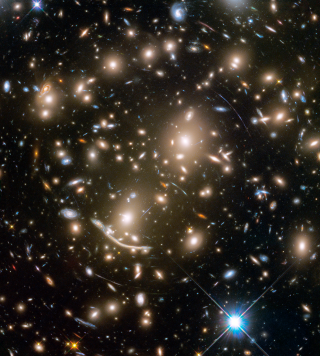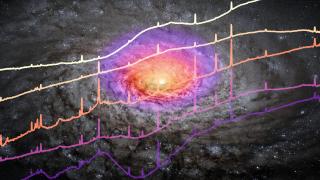Bibcode
Walcher, C. J.; Wisotzki, L.; Bekeraité, S.; Husemann, B.; Iglesias-Páramo, J.; Backsmann, N.; Barrera Ballesteros, J.; Catalán-Torrecilla, C.; Cortijo, C.; del Olmo, A.; Garcia Lorenzo, B.; Falcón-Barroso, J.; Jilkova, L.; Kalinova, V.; Mast, D.; Marino, R. A.; Méndez-Abreu, J.; Pasquali, A.; Sánchez, S. F.; Trager, S.; Zibetti, S.; Aguerri, J. A. L.; Alves, J.; Bland-Hawthorn, J.; Boselli, A.; Castillo Morales, A.; Cid Fernandes, R.; Flores, H.; Galbany, L.; Gallazzi, A.; García-Benito, R.; Gil de Paz, A.; González-Delgado, R. M.; Jahnke, K.; Jungwiert, B.; Kehrig, C.; Lyubenova, M.; Márquez Perez, I.; Masegosa, J.; Monreal Ibero, A.; Pérez, E.; Quirrenbach, A.; Rosales-Ortega, F. F.; Roth, M. M.; Sanchez-Blazquez, P.; Spekkens, K.; Tundo, E.; van de Ven, G.; Verheijen, M. A. W.; Vilchez, J. V.; Ziegler, B.
Bibliographical reference
Astronomy and Astrophysics, Volume 569, id.A1, 18 pp.
Advertised on:
9
2014
Journal
Citations
234
Refereed citations
223
Description
We describe and discuss the selection procedure and statistical
properties of the galaxy sample used by the Calar Alto Legacy Integral
Field Area (CALIFA) survey, a public legacy survey of 600 galaxies using
integral field spectroscopy. The CALIFA "mother sample" was selected
from the Sloan Digital Sky Survey (SDSS) DR7 photometric catalogue to
include all galaxies with an r-band isophotal major axis between 45''
and 79.2'' and with a redshift 0.005 < z < 0.03. The mother sample
contains 939 objects, 600 of which will be observed in the course of the
CALIFA survey. The selection of targets for observations is based solely
on visibility and thus keeps the statistical properties of the mother
sample. By comparison with a large set of SDSS galaxies, we find that
the CALIFA sample is representative of galaxies over a luminosity range
of -19 > Mr > -23.1 and over a stellar mass range
between 109.7 and 1011.4 M⊙. In
particular, within these ranges, the diameter selection does not lead to
any significant bias against - or in favour of - intrinsically large or
small galaxies. Only below luminosities of Mr = -19 (or
stellar masses <109.7 M⊙) is there a
prevalence of galaxies with larger isophotal sizes, especially of nearly
edge-on late-type galaxies, but such galaxies form <10% of the full
sample. We estimate volume-corrected distribution functions in
luminosities and sizes and show that these are statistically fully
compatible with estimates from the full SDSS when accounting for
large-scale structure. For full characterization of the sample, we also
present a number of value-added quantities determined for the galaxies
in the CALIFA sample. These include consistent multi-band photometry
based on growth curve analyses; stellar masses; distances and quantities
derived from these; morphological classifications; and an overview of
available multi-wavelength photometric measurements. We also explore
different ways of characterizing the environments of CALIFA galaxies,
finding that the sample covers environmental conditions from the field
to genuine clusters. We finally consider the expected incidence of
active galactic nuclei among CALIFA galaxies given the existing
pre-CALIFA data, finding that the final observed CALIFA sample will
contain approximately 30 Sey2 galaxies.
Based on observations collected at the Centro Astronómico Hispano
Alemán (CAHA) at Calar Alto, operated jointly by the Max Planck
Institute for Astronomy and the Instituto de Astrofísica de
Andalucía (CSIC). Publically released data products from CALIFA
are made available on the webpage http://www.caha.es/CALIFA
Related projects

Galaxy Evolution in Clusters of Galaxies
Galaxies in the universe can be located in different environments, some of them are isolated or in low density regions and they are usually called field galaxies. The others can be located in galaxy associations, going from loose groups to clusters or even superclusters of galaxies. One of the foremost challenges of the modern Astrophysics is to
Jairo
Méndez Abreu

Traces of Galaxy Formation: Stellar populations, Dynamics and Morphology
We are a large, diverse, and very active research group aiming to provide a comprehensive picture for the formation of galaxies in the Universe. Rooted in detailed stellar population analysis, we are constantly exploring and developing new tools and ideas to understand how galaxies came to be what we now observe.
Anna
Ferré Mateu

Nuclear Activity in Galaxies: a 3D Perspective from the Nucleus to the Outskirts
This project consists of two main research lines. First, the study of quasar-driven outflows in luminous and nearby obscured active galactic nuclei (AGN) and the impact that they have on their massive host galaxies (AGN feedback). To do so, we have been granted time with the Gran Telescopio CANARIAS (GTC) in the optical and near-infrared ranges
Cristina
Ramos Almeida